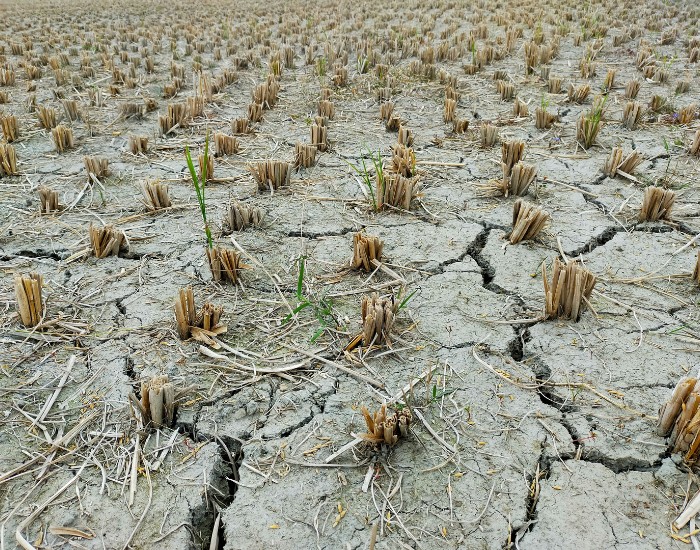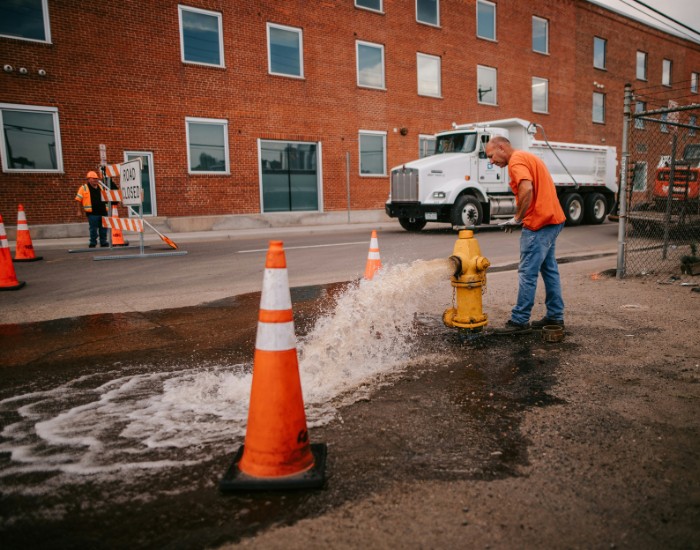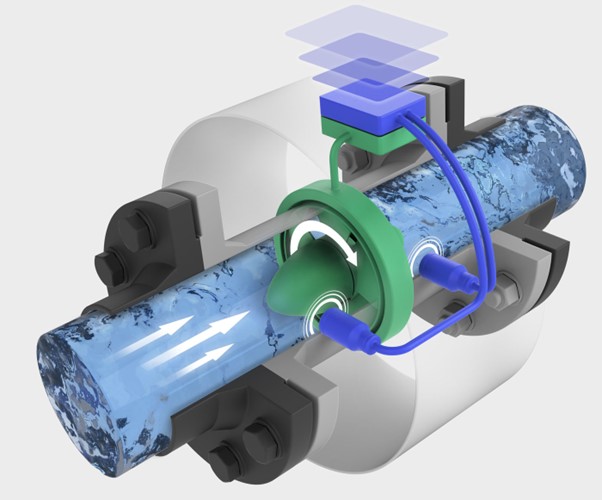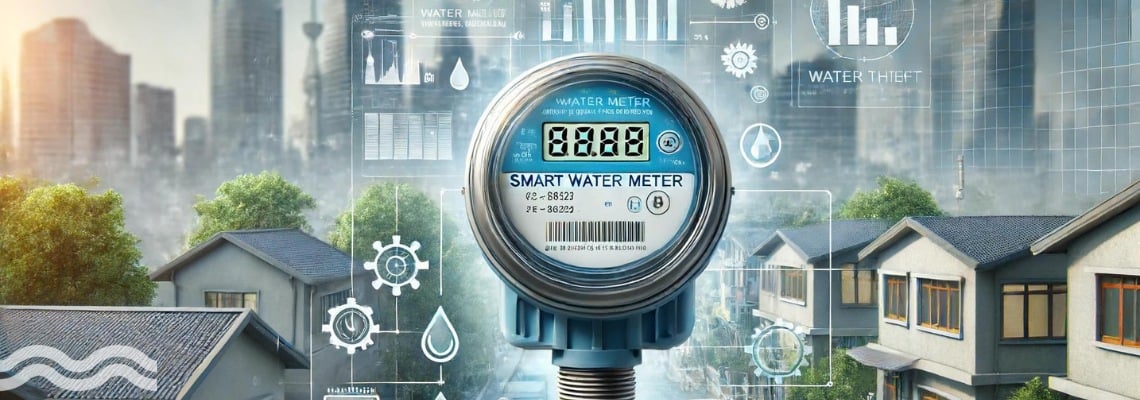Tech Dive: Using smart meters to detect water theft
Smart meters have many advantages over traditional meters, one of which is the volume and accuracy of the data they produce. This data can be used to analyse and detect many things, for example, water theft.
The advantages of using smart meters
Smart meters are used to accurately measure and record water use. Whereas traditional ‘dumb’ meters need to be read manually, which often happens as little as twice a year, smart meters can provide either real-time or regular updates.
Garry Tabor, director of Smart Water Solutions, Badger Meter, told Aquatech Online: “Smart meters give us data, and it's the data that's going to help us reduce non-revenue water and build sustainability.”
That data can be analysed and interpreted, and either acted on directly or used to build a long-term picture of usage for water utilities and can also be sent straight to householders to provide them with an accurate picture of their own water use, highlighting leaks or helping to effect behaviour change.
Accurate picture of a water network
Water utilities use smart meters to maintain a live, real-world understanding of how water is moving through their network. Once you know the pressures, flow rates, volumes, etc, of normal usage, you can use that data to control those things, but also to detect when something unexpected occurs.
“It's the data that's going to help us reduce non-revenue water.”
This, of course, is a simplified view: If you know what normal looks like, when the data (whichever data sets you use) no longer looks like that, or shows discrepancies, then something has occurred that will need closer observation.
Often, this will indicate a leak or an event that could lead to a leak. And the earlier and more precisely you can identify a leak, the quicker it can be fixed. However, by their very nature, smart meters can also be used to identify another aspect of non-revenue water: theft.
What is water theft?
Non-revenue water (NRW) is any water that has been cleaned, processed, and distributed in a water network that does not reach the consumer. Leaks are a major contributor of NRW, but so is theft.
Water theft occurs in many ways, for example: A homeowner might find a way to bypass a meter on the supply pipe into their home; a construction company might tap into a hydrant to avoid paying a licence; farmers in remote, water scarce regions might divert water from pipework for agricultural purposes, etc.
“For every pound you pay the water company, 40p doesn’t get to you.”
People ‘steal’ water for all sorts of reasons. In 2020, a study by the University of Adelaide suggested that between 30-50 per cent of the world's water supply is stolen each year. The study sought to understand the reasons why people steal water; these included social attitudes, institutions, and future scarcity concerns.
The study made clear that where water scarcity is high, the potential rewards of water theft (i.e. for growing crops) were higher than the punishment. Similar statistics are given by the World Bank, which estimates 30 per cent of all the world’s piped water is lost before it can reach a customer.
All theft affects everyone in some way: Consumers will pay more for their water; water stressed areas experience reduced supplies, and so on. As Garry Tabor told Aquatech Online: “For every pound you pay the water company, 40p doesn’t get to you.”
How can smart meters help detect water theft?
Smart meters provide a regular flow of data about what is happening at specific points in a water network. Whether that is real-time, every 10 minutes, every hour, or whichever timeframe is considered optimal, data is constantly being produced.
This data not only builds an historical dataset for that particular metering point, but when this information is analysed alongside other smart meters in a network, the potential is huge. For example, using District Metering Areas (DMA), it is easy to build up a fairly accurate picture of what is going on in different sections of a utility’s water infrastructure.
The data can be accessed remotely and processed in numerous ways, whether using bespoke tools or adopting machine learning and/or AI to automatically highlight areas of concern.
By knowing what is normal, it is easier to spot something strange. Using the data from smart meters, for example, pattern recognition can pinpoint leaks, but also times of the day and durations of changing patterns that might suggest that water is being taken from the system.
"By knowing what is normal, it is easier to spot something strange."
DMAs can also provide a better understanding of what should be expected at each point of the system. This last point is important, because if, for example, a criminal operation has a permanent illegal connection, looking for leaks is unlikely to detect theft.
However, if you know from other parts of your system what to expect at every subsequent metering point (within your accepted parameters), and you can match that to registered/licenced connections to the supply network, discrepancies will be more easily highlighted in the data and an investigation can take place.
Tabor offered Aquatech Online an example: “Let’s say that you go and get your car washed. The people do a fantastic job, but will they have a meter to measure water consumption? Now, if there was a DMA, which was smart, the water company can take a look at consumption in the area and make sure there is a licence in place.”
From reactive to proactive, taking control of water data
Smart meters are helping to turn the water sector from a reactive industry to a proactive one. A good example can be seen in Mexico, where traditionally metering levels have been low. A programme is in place to install 1 million smart meters in the next 10 years. This forms part of a plan to upgrade the country’s water infrastructure.
One of the major focuses is on smart metering on entry to houses, to provide accurate billing information. Smart meters with accelerometers can alert utilities when a meter is removed, which could indicate the owner of the property is trying to use water without paying for it.
However, DMAs are also playing a part in detecting water theft. Large parts of Mexico are suffering from water stress and scarcity. Aquifers are becoming depleted, and reservoirs are at all-time low levels. In 2023, it was reported that NRW rates were running at 70 per cent in Mexico City, with only half the population having access to potable water.
"In 2023, it was reported that NRW rates were running at 70 per cent in Mexico City"
Articles in the Washington Post talked about utility workers having to travel in convoys to tackle water theft because of the dangers involved. These water stresses make water highly desirable and open the infrastructure to theft.
In the district of Monterrey, a district metering plan was implemented in 2018, but without any smart instrumentation. This year, SDAM, the local utility, began a programme of installing smart meters to monitor flow and pressure throughout the drinking water system, coupled with pressure valves and dataloggers. The system has given the local authority greater clarity of the water flowing through its system.
Again, the more access to data you have, the better understanding you have of both what water you have and what you think you should have at any point in a system. Non-revenue-water will, therefore, be much easier to detect.

Smart meters and how to identify water theft?
As a company, Subeca is approaching the idea of non-revenue water from a slightly different mindset, via its Subeca Pin meter.
Patrick Keaney, CEO, explained to Aquatech Online: “If you can give someone a simple tool, that is easy to install, and within minutes you can get data readings, that is a good thing. We’re an IOT company, not necessarily a meter company, so we come at the problem from a different angle. Our whole thing is that water tech has been too complicated and too expensive. If you give people really simple tools, the ability to adopt is so much greater.”
“If you can give someone a simple tool, that is easy to install, and within minutes you can get data readings, that is a good thing.”
Those simple tools include Subeca’s PIN, a portable displacement meter, which can be easily and quickly installed anywhere you wish to monitor water use. Once installed, a utility can scan the QR code on the meter and almost immediately start receiving data. The data can be sent to a smartphone or computer via Bluetooth, LoraWan or, in the USA at least, via Amazon Sidewalk, a free IoT network, which covers 93 per cent of the population and allows triangulation of readings to help pinpoint location of potential theft.
“You can get 15-minute readings, or get them hourly, whatever you want. So, if you think water theft is going on but need to know better – you can’t go out every three days to get a reading – but you can install one of our devices, or pop it on an existing meter, and you get data really easily, and you can use the data to understand what is going on.”
“If you suspect a construction company or car wash is tapping into a hydrant illegally, you can install a PIN and be up and running with data relatively quickly.”
The ease of installation means that if you suspect a construction company or car wash is tapping into a hydrant illegally, you can install a PIN and be up and running with data relatively quickly.

Pydro’s PT1 is a hydro-powered turbine flow meter for use in district metering areas (DMA). It measures flow, pressure, volume, and temperature to high levels of accuracy levels in all part of a network without the need of an external power supply.
It delivers data via wireless real-time data transmission to any cloud-based or custom monitoring system, via LTE CAT M1, NB IoT and 2G, virtually from the moment of installation. A data plan is provided by Pydro.
The data can be used to help manage smart water networks, to reduce water leakage, to avoid pipe bursts and to do quality checks, with both on-device event and alert management, as well as ongoing analysis of generated data.

The meter has been designed to be used for: Water supply in district metering area; leak detection and monitoring in district metering area; active water loss reduction through smart pressure management; survey and flow investigation; irrigation and abstraction.
The PT1 can store data up to 24 hours without losing measurements. After this time, old data will be overwritten by new measurements.
Badger Meter has recently launched its Blue Edge suite of solutions which aims to connect hardware, software, and data analytics into a powerful took for monitoring water use with high levels of accuracy. The solution highlights the powerful link between smart meter and the data they produce, and how analytics can help assess and detect issues, such as theft, quickly and efficiently.
“The solution highlights the powerful link between smart meter and the data they produce.”
Advances in meter technology help to produce more accurate and reliable data. Badger Meter’s E-Series® Ultrasonic water meters use high-frequency sound waves to measure flow by consecutively sending ultrasonic signals with and against the flow of water via sensors as water enters a measuring tube.
By measuring the time that it takes for the ultrasonic signals to travel between the two sensors, the meter can accurately determine the flow rate and volume rate of the water.
Tabor told Aquatech Online: “Historically, the water sector has worked in silos. In the past, if I talked about water quality, it would stay in that box; if someone talked about water theft and non-revenue water, it stayed in that box. With smart meters and data, we move to smart water, and we unite all of our insights together to get a broader, fuller picture.”
The Itron Intelis wSource ultrasonic smart meter collects meter readings remotely, enabling utilities to quickly identify unusual water patterns, including water theft. The Intelis meter provides accurate measurement over the product lifecycle and has enabled customers, such as Abbanoa S.p.A, to harness the power of detailed and precise data to help reduce real and apparent water loss.

Vishal Mungra, director of product management, Itron, said: “Our NRW solutions provide aggregated data from existing meters, sensors and data systems to provide insights into real and apparent losses. Apparent losses include water inaccurately billed or measured, often due to meter errors, theft, unauthorized consumption, or illegal connections.”
Itron uses a variety of technologies and tools designed to enhance operational visibility, improve efficiency, and ensure accurate billing. They can provide insights into unauthorized use or theft, through advanced metering infrastructure (AMI), remote monitoring and control systems that allow utilities to quickly respond to leaks or unusual water consumption patterns, flow meters and advanced data analytics.
Mungra added: “Itron’s Temetra Analysis, with advanced data collection, remote monitoring, and sophisticated analytics, provides a robust framework for combating water theft. By offering real-time insights and actionable data, these meters enable utilities to detect, investigate and prevent unauthorized water use effectively. For example, an Itron customer leveraged the Itron Leak Sensors - acoustic sensors that listen for leaks in water network distribution system - to reduce the time required to detect water leaks and theft by 90 per cent.”
Share your water technology stories with us
Do you have an innovation, research results or an other interesting topic you would like to share with the international water technology industry? The Aquatech website and social media channels are a great platform to showcase your stories!
Please contact our Sr Brand Marketing Manager Annelie Koomen.
Are you an Aquatech exhibitor?
Make sure you add your latest press releases to your Company Profile in the Exhibitor Portal for free exposure.
We promise never to send you spam and you can unsubscribe at any time!
